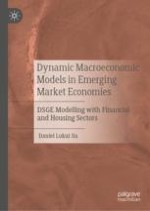2020 | OriginalPaper | Buchkapitel
8. The Full Model
verfasst von : Daniel Lukui Jia
Erschienen in: Dynamic Macroeconomic Models in Emerging Market Economies
Verlag: Springer Singapore
Aktivieren Sie unsere intelligente Suche, um passende Fachinhalte oder Patente zu finden.
Wählen Sie Textabschnitte aus um mit Künstlicher Intelligenz passenden Patente zu finden. powered by
Markieren Sie Textabschnitte, um KI-gestützt weitere passende Inhalte zu finden. powered by
